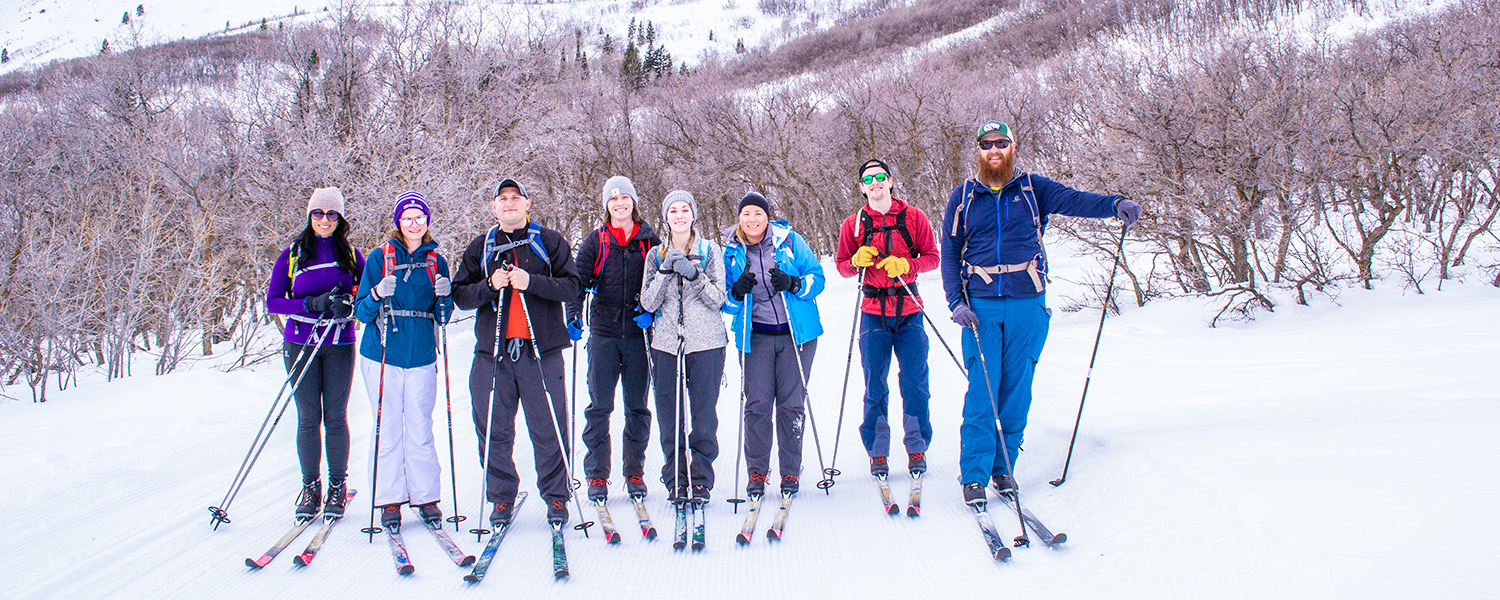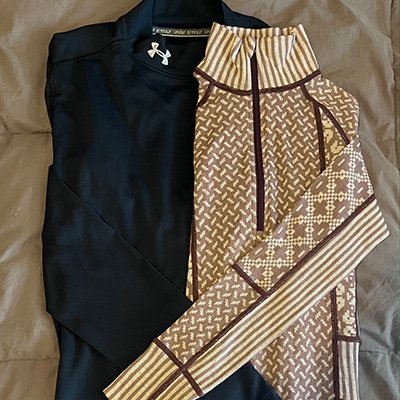Layering Basics: Using the Three Layer System for Warm Winter Adventures

Make sure to stay warm this winter season by layering efficiently! The best way to do this is by using the three layer system, which is made up of the base layer, middle layer, and outer layer. This will ensure you stay warm, dry and ready for your adventure.
Bringing all layers when enjoying nature in cold temperatures is important because you can always remove a layer you brought, but you can’t put on a layer you didn’t bring. Adjusting your layers as conditions change is also a valuable skill that may take some practice. Be aware of removing your shell once precipitation ends, or adding a middle layer if the activity alone is not keeping you warm.
Here are the three layers to include in your winter adventure wardrobes…
1. Base Layer
 This layer is the closest to the body, so it's main job is to wick moisture away from the skin. Staying dry is the first step to maintaining body temperature. This is why it is important to wear the correct fabrics, such as wool, polyester and nylon. Do not wear cotton when layering, it will keep you cold by absorbing and trapping the moisture close to the skin. With this in mind, all underwear should also be made of a wicking material.
This layer is the closest to the body, so it's main job is to wick moisture away from the skin. Staying dry is the first step to maintaining body temperature. This is why it is important to wear the correct fabrics, such as wool, polyester and nylon. Do not wear cotton when layering, it will keep you cold by absorbing and trapping the moisture close to the skin. With this in mind, all underwear should also be made of a wicking material.
2. Mid Layer
This layer's job is to retain the heat that is generated by the body. The more insulation here, the warmer you will be. There are many options for this layer, each with its own strengths. Polyester fleece and down insulated jackets are the most common.
Polyester fleece jackets are available in a variety of different weights, where heavy weight fabrics are warmer. Because the material is so breathable, you are unlikely to overheat. It also dries quickly, meaning you will even stay warm when damp. The downside of this breathability is that the wind blows right through it. An outer layer may be needed if this layer is being used as insulation on a windy slope.
Down insulated jackets are also rated for efficiency. It is measured in fill power and ranges from 450 to 900. This material is valuable because it compresses so easily and actually offers more warmth for its weight than any other insulating material. Although there are many benefits to down, once it becomes wet it is no longer an effective insulation layer.
3. Outer Layer
 This layer protects you from all wind and precipitation. Outer shells are water resistant, and some also have insulation. With every layer in your system, there is going to be a give and take. This layer is a balance of waterproofing and breathability. For high output activities like backcountry touring and xc skiing, shells often do not allow for enough body heat to escape - be cautious not to make yourself sweat too much inside a shell!
This layer protects you from all wind and precipitation. Outer shells are water resistant, and some also have insulation. With every layer in your system, there is going to be a give and take. This layer is a balance of waterproofing and breathability. For high output activities like backcountry touring and xc skiing, shells often do not allow for enough body heat to escape - be cautious not to make yourself sweat too much inside a shell!
Don't Forget!
Socks, gloves and a hat go a long way! In order to stay toasty, make sure your head is covered and your hands and feet are as warm and dry as possible. Hand warmers or hot water in a Nalgene are also great ways to generate heat. The drive home is a lot more comfortable when you have a pair of dry socks and shoes in the car.
Failing to prepare is preparing to fail, and layering is no exception! Warm adventure buddies are the latest in outdoor winter fashion. Follow our simple steps and start enjoying nature this season.
Now that you know how to layer for your winter adventures, make sure you have the gear you need by checking out our winter rentals!
About The Author
Matisse is a Weber State student and has been involved in the Weber Outdoor Program since the Spring of 2021. In that time she has held almost every position that the program has to offer! She is working toward a Bachelor of Integrated Science Degree which focuses on Web Development, Digital Media, and Outdoor Recreation Education. This makes it possible to combine all of her passions into one direction. As an Ogden local, she looks for any chance to escape into the mountains and makes it a priority to create an accessible environment in any activity that she leads. Although backpacking and hiking have a special place in her heart, becoming a raft guide and honing in climbing skills has become her main focus, due to all the amazing mentorship available. Educating the community about how incredibly powerful the outdoors are and how to enjoy them safely is the exact reason we are all here!
Back to Blog
